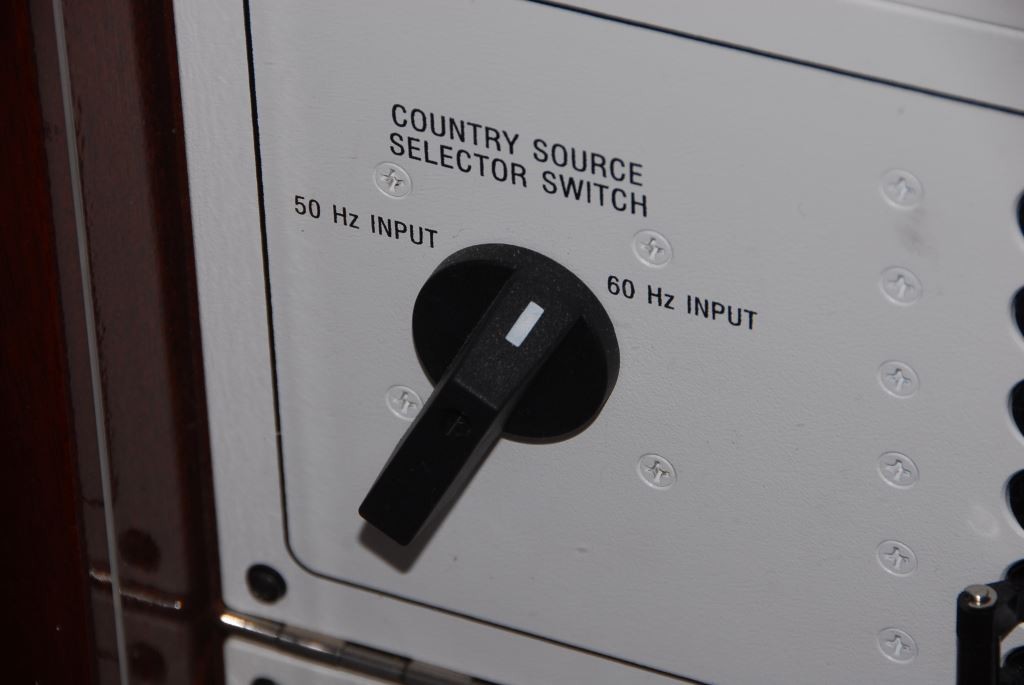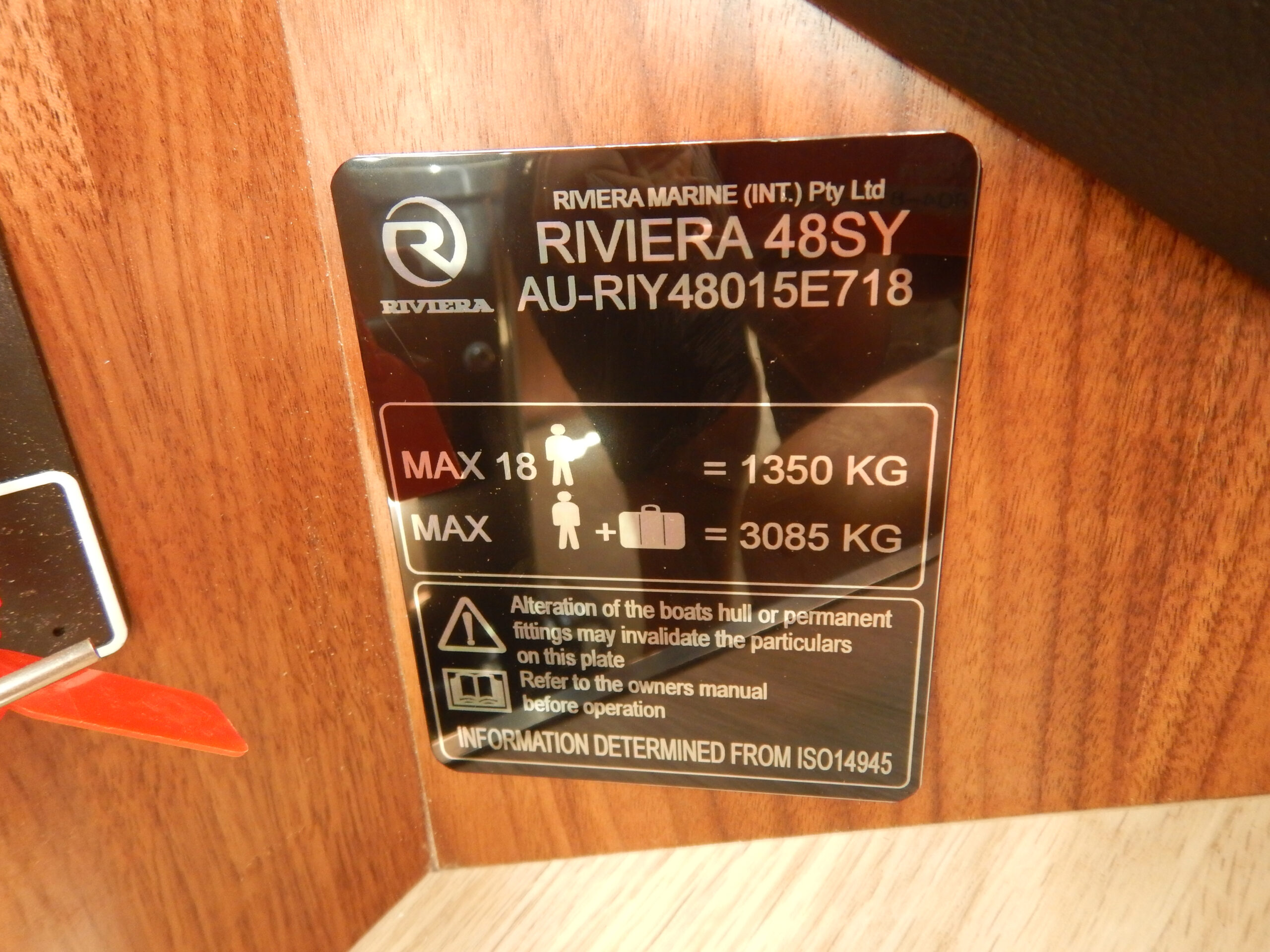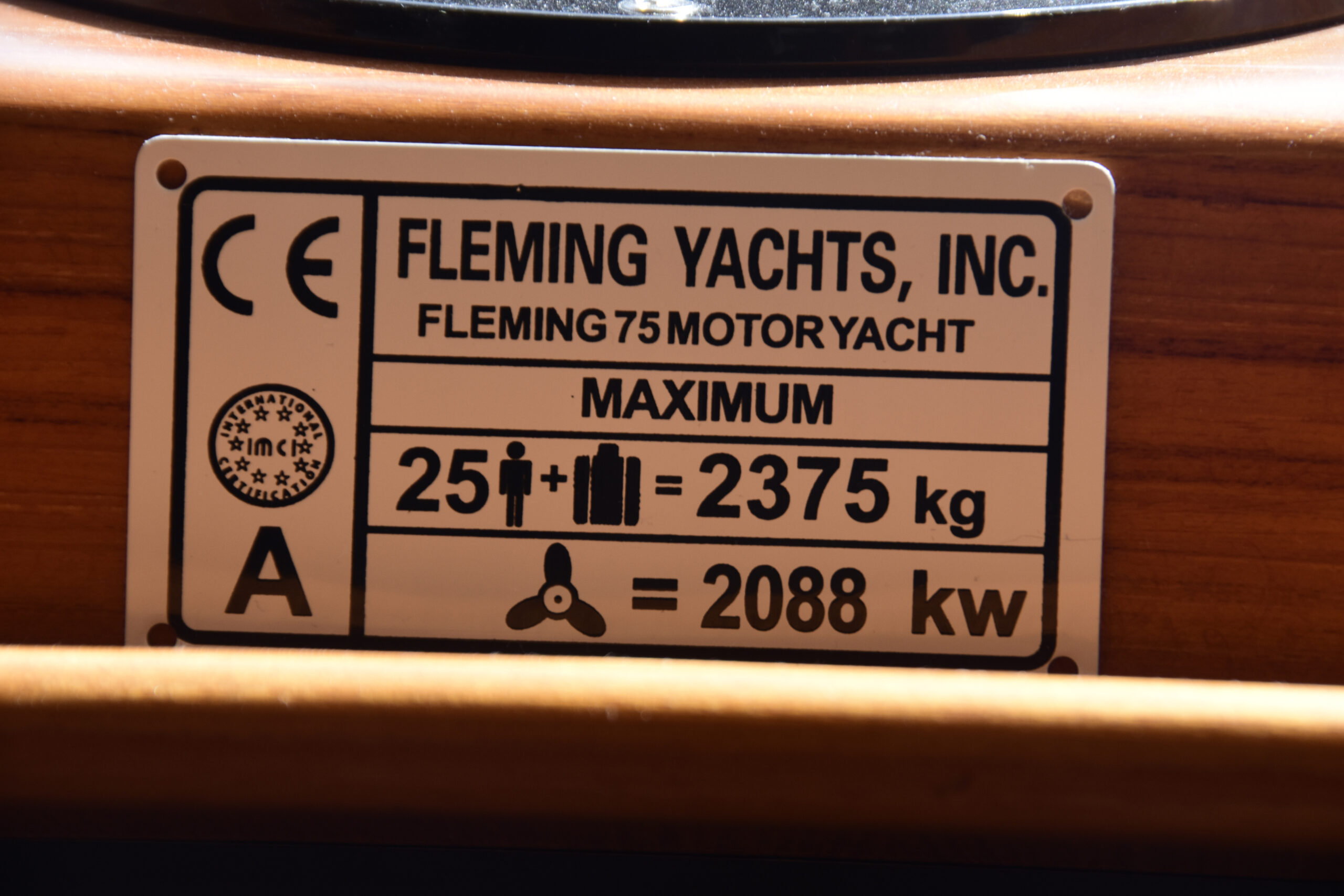From the Masthead
A few months ago I found myself working on a project in La Rochelle, France. La Rochelle is on the Atlantic coast, and just a few hours from Normandy, the site of Operation Overlord and the famed Allied D Day landing in June 1944. As an avid WWII history enthusiast I simply couldn’t resist the temptation to explore this region.

A Eurasian Kestrel surveys the beach at Point du Hoc.
Setting aside just three short days for the excursion, I carefully planned my assault, selecting and mapping out all of the locations I wanted to visit, including among others Utah and Omaha Beaches, the town of Sainte-Mère-Église (assaulted by elements of the 82nd and 101st Airborne Divisions early on the morning of June 6), the American and German cemeteries, Point du Hoc (where US Army Rangers scaled an exposed cliff to take out German guns, they had been moved but the Rangers searched for, found and destroyed them) and the seaside village of Arromanches.
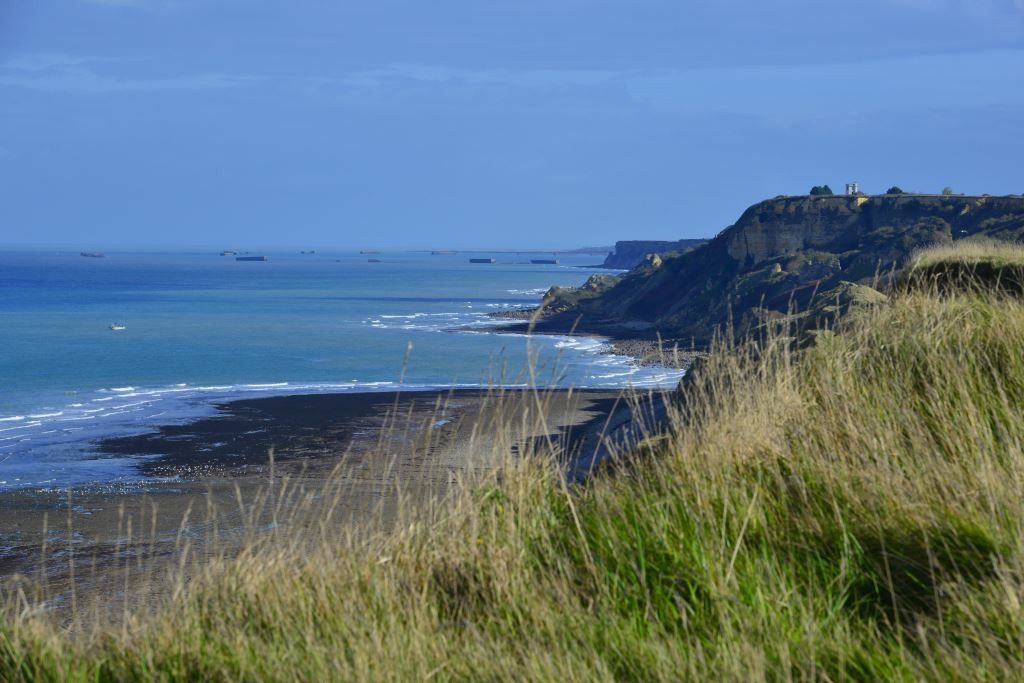
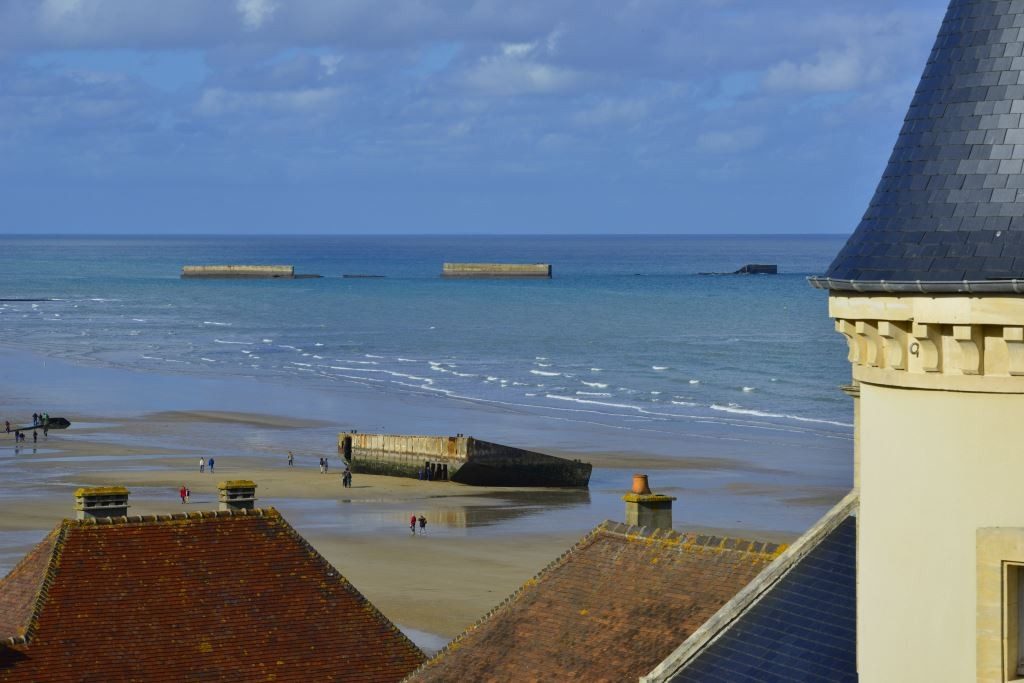
The Mulberry Harbor at the village of Arromanches.
The latter is well-known for the artificial harbor that was created there by the British, on what was known as Gold Beach. Code named “Mulberry” and originally conceived by Winston Churchill during WWI, the harbor offered the Allies a toe hold on the coast, where they could safely land hundreds of tons of supplies that would be needed by the advancing armies early on in the invasion. Ultimately known as “Port Winston” it would serve as the primary landing place for war material until nearby major ports could be taken; in the space of its first 100 days of operation, the port facilitated the disembarkation of 2.5 million men, 500,000 vehicles, and 4 million tons of material.
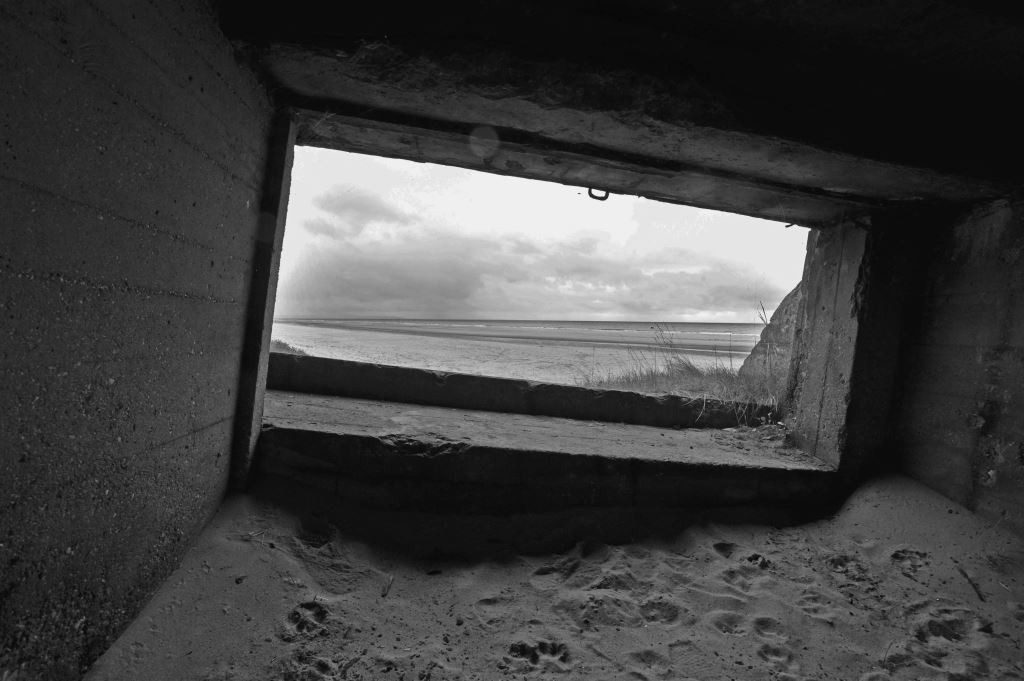
Looking out over Utah Beach, from within the remains of a German gun emplacement.
With a fetch that stretches across the North Atlantic Ocean, France’s Atlantic coast is exposed and unforgiving at best. The shallow Bay of Biscay and English Channel are infamous for their tumultuous, vessel-pounding conditions. Thus, building an artificial harbor, under combat conditions, along this coast, was thought by many to be shear madness. Churchill, Eisenhower and others believed it to not only be possible, it was essential, and so engineers set to work designing a system that would meet the needs of the Allied armies and navies. The “harbor” was made up of a series of huge floating concrete caissons, called Phoenixes, which were towed from the UK and sunk in place, and adjoining floating roadway spans, called “Whales”. Today, several of the caissons remain in an imposing line just offshore, along with one on the beach, which can be surveyed by sightseers at low tide (I was fortunate during my visit, low tide was during daylight hours, enabling me to walk all of the landing beaches I visited).
One of the many challenges involved securely anchoring the floating trestle sections, the Whales, which would connect the concrete Mulberry harbor with the beach. Major Allan Beckett, of the British Army’s Royal Engineers was assigned the task. After much experimentation and testing, he produced what he referred to as the “kite anchor” (he also designed the Whales). While there’s much more to the story, in short, the anchor worked, keeping the Whales secure while thousands of vehicles, and hundreds of thousands of tons of supplies, passed over them in the weeks and months after D Day. While a fierce Nor’easter, the worst in 40 years, passed over the area one week after D Day, wreaking havoc on many area ports, including destroying another Mulberry at Omaha Beach, Beckett’s anchors held through the storm with minimal damage to the Arromanches Mulberry.
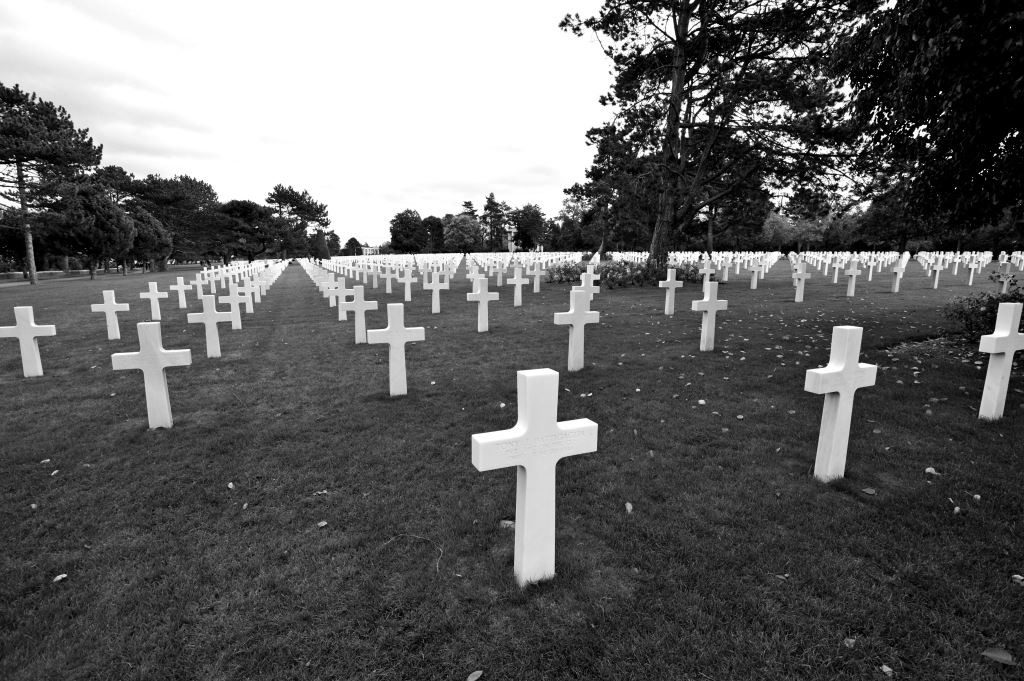
The American Cemetery at Omaha Beach.
The monument shown in the accompanying photographs is located at the Arromanches beachhead. Dedicated to Beckett and his invention; it displays one of the actual anchors used in the landings. Mounted on piers along the road leading into the small village are a series of the Whales used to connect the Mulberry to the beach. When I looked at the anchor, my first thought was, ‘That looks a lot like a CQR’, it’s even articulated. The anchor, Whales and Mulberry concept represent a triumph of maritime engineering, particularly in wartime.
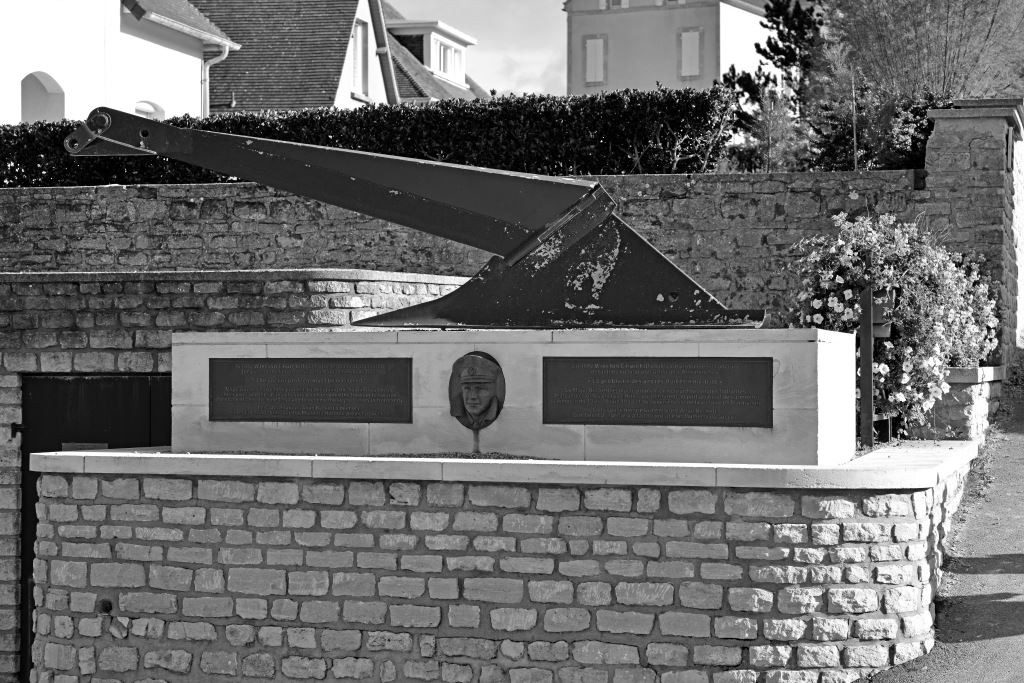
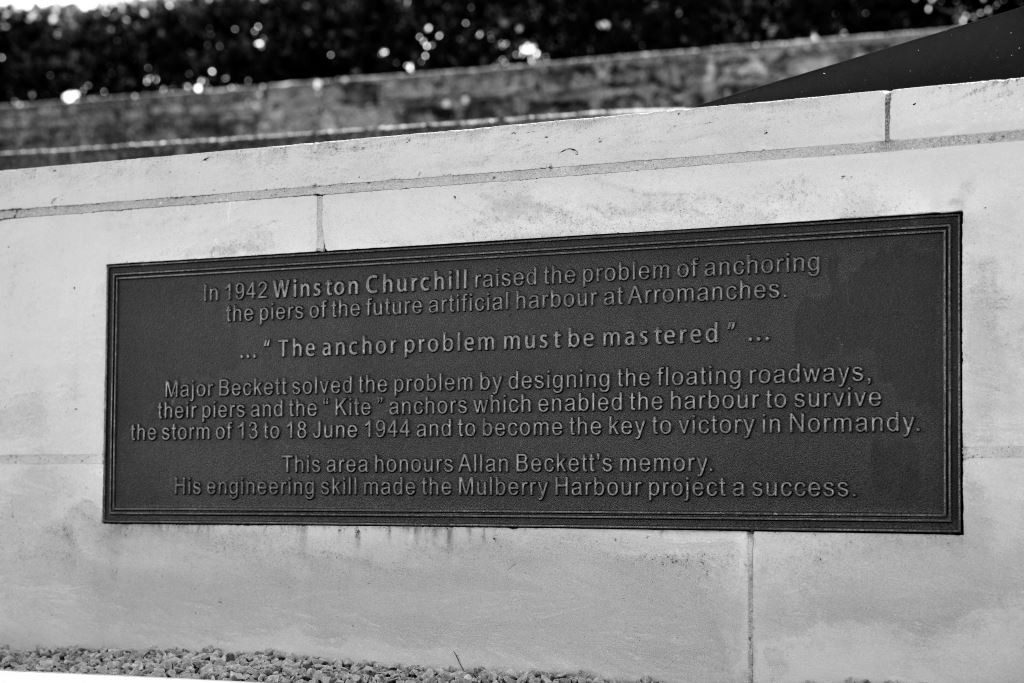
A memorial to Major Beckett’s “Kite Anchor”; without it, and the “Whales”, the Mulberry Harbors would not have been possible.
Today Arromanches is a small tourist town. On the day of my visit it’s warm, sunny, and bucolic; souvenir shops line the streets, their windows filled with D Day memorabilia, T shirts, hats, flags, while families mill about the beached remains of one caisson. I hike up onto a bluff that overlooks the harbor, as I stand there absorbing the scene, I glance down and realize the ground before me is laced with the remains of German trenches. I try to imagine what it must have been like, for both defenders and invaders alike, to see all those men, vehicles and mountains of material rumble ashore day after day; it must have been an awe-inspiring sight.
This month’s Marine Systems Excellence eMagazine article covers the subject of 50 Hz and 60 Hz shore power systems, and the various issues related to using them in different locations. I hope you find it both interesting and useful.
50 vs. 60 Hz; Understanding the difference from a boat buying and ownership perspective
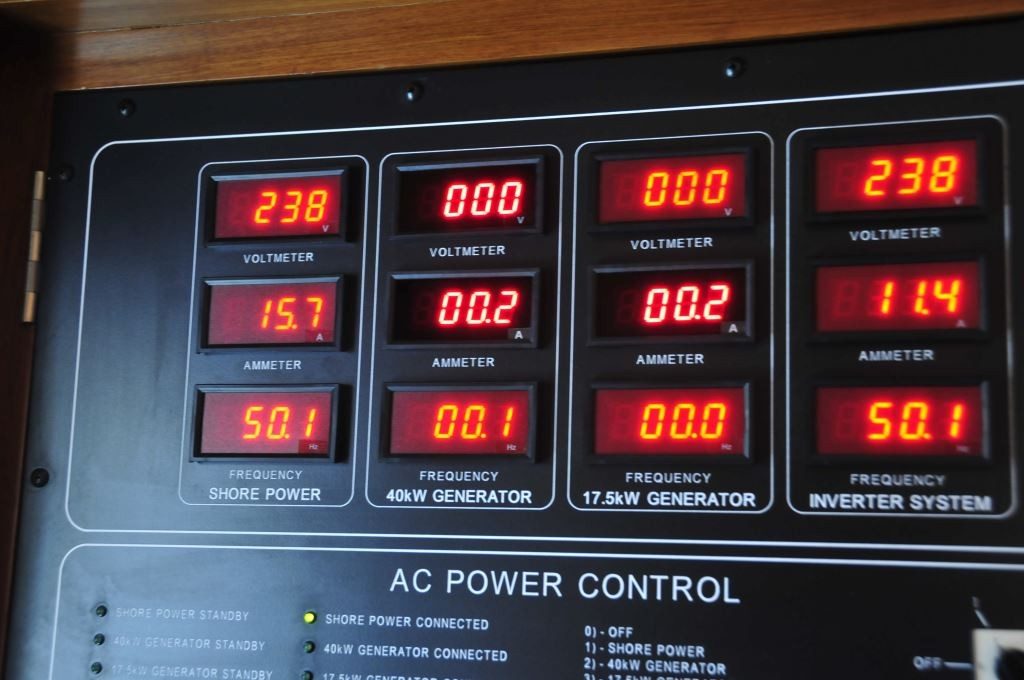
There’s more to shore power than voltage, frequency plays an equally important role.
A few months ago a client posed this question, “I’m looking at a listing for an outstanding, drop dead gorgeous, meticulously-maintained, perfectly laid out and spec’d boat. It has everything I want, and the price is right. Alas, it is a 50 Hz model. Is there a way of converting the Euro plugs to our North American plugs?”
I’ve been asked this question many times, and with good reason. The world is flat and getting flatter, including where cruising vessels are concerned.
Let me begin with a specific aspect of the question posed by the client, he asks if there is a way to convert the European plugs to North American plugs. There are universal wall receptacles that accept a range of, but not all, male plug designs. I frequently encounter these when traveling in Asia. However, they would only be applicable for devices that are not voltage or frequency sensitive, like laptops, tablet and phone chargers. These can, however, be very dangerous if misused (and they are not ABYC compliant), plugging a 120 volt 60 Hz hair dryer, or flattening iron into 240 volts 50 Hz would, for instance, be a memorable and potentially dangerous experience, one that’s best avoided. With these universal receptacles it becomes easy, too easy, to make such a mistake. The wall receptacle configuration itself is only one small aspect of the onboard power option conundrum.
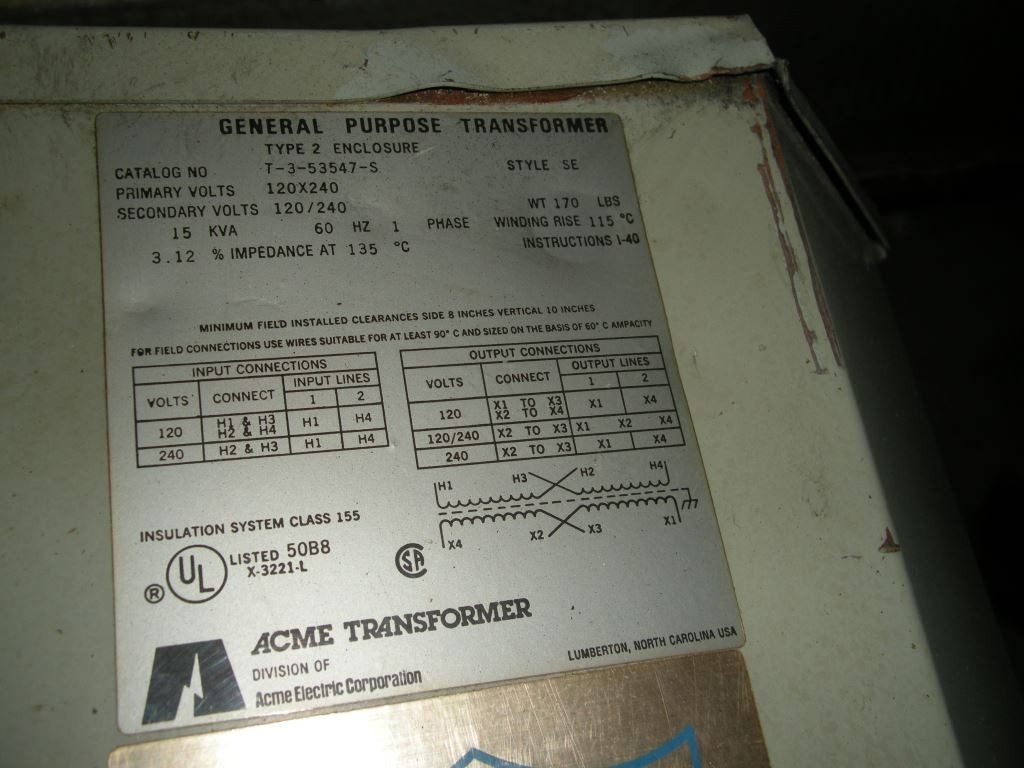
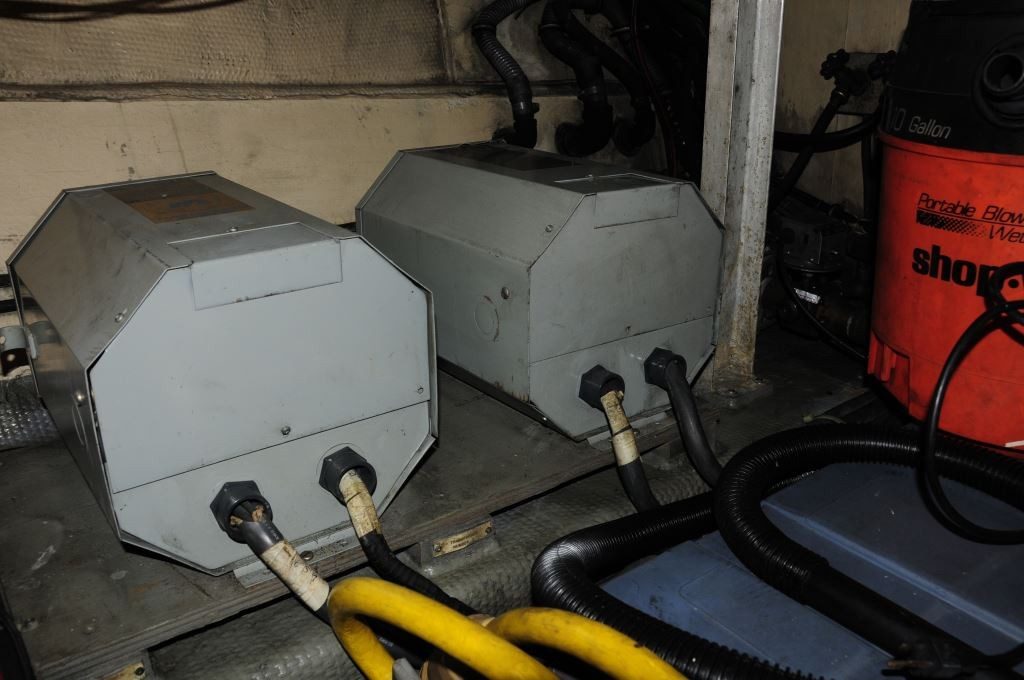
Not all shore power transformers are designed to operate on 50 Hz and 60 Hz, those shown here are rated for 60 Hz alone, when 50 Hz power was applied, they simply failed to operate.
Power Options
When dealing with vessels that are designed to be used in North America, vs. those designed to be used in Europe, Australia, New Zealand and parts of Asia and South America, the primary issues are voltage and frequency. In North America, dockside voltage is 120 volts AC (VAC) and 120/240 volts AC, supplied at a frequency of 60 Hertz (Hz), larger vessels, those over about 40 feet, often use a combination of both 120 VAC and 240 VAC, plugging into a 120/240 volt, what’s known as “single phase”, 50 amp receptacle. These vessels are often referred to simply as “60 Hz”. In Europe, Australia, NZ etc., dockside power typically consists of 230-240 VAC, supplied at 50 Hz, and commonly available in anywhere from 10 to 32 amps and sometimes more. Vessels wired for this system are frequently referred to as “50 Hz boats”.
Conversion
Generally speaking, if you were to operate a 60 Hz vessel in a 50 Hz environment, you’d need to convert voltage and frequency. There are a number of options for accomplishing that goal (and sub-variations for 50 Hz vessels operating in a 60 Hz environmental). While it’s relatively easy to convert the voltage, using a simple transformer (beware, not all shore power transformers are designed to operate on 50 or 60 Hz), converting the frequency is more complex and costly, and requires more real estate.
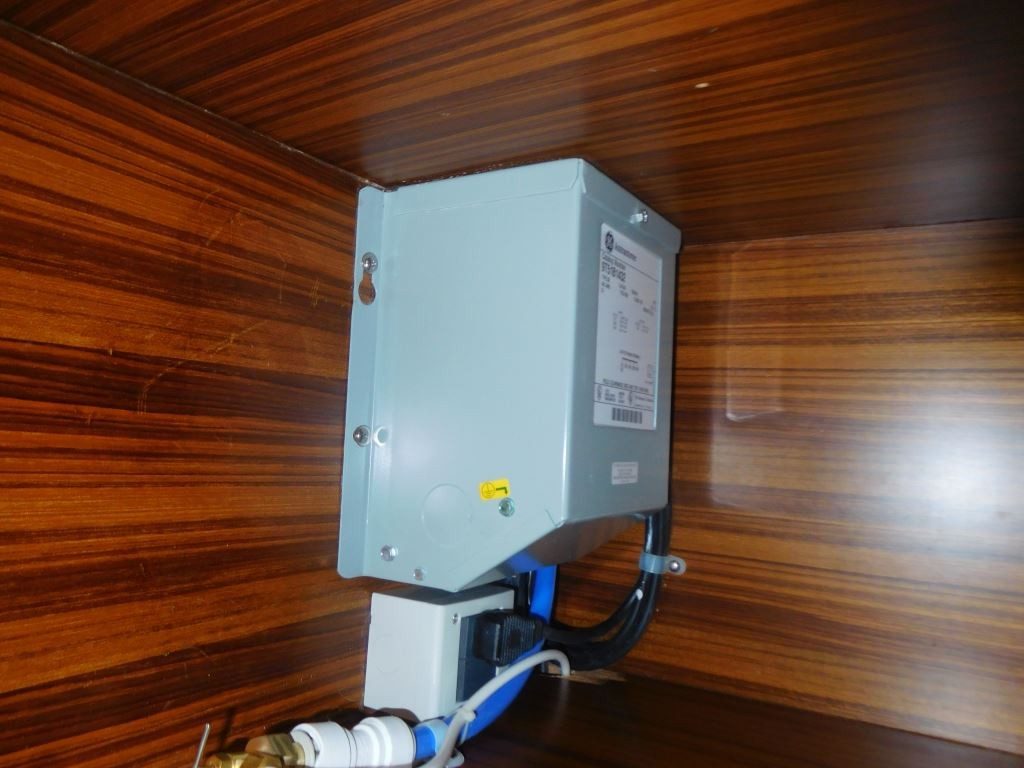
This small auto-transformer is being used to reduce voltage to a 60 Hz refrigerator, thereby offsetting the effects of the 50 Hz power it’s receiving.
Converting the vessel’s entire electrical system from 50Hz to 60Hz, or vice versa, while seemingly appealing, is almost always impractical and cost-prohibitive unless the vessel is old enough to already require an electrical refit. Among other challenges are wire size, because 240 VAC gear uses half the current or amperage as otherwise equal 120 VAC gear, smaller gauge wire can be used, along with smaller circuit breakers. For simplicity sake, builders who build for both markets often use the larger size wire for all vessels, but builders who build only for a 50Hz market are unlikely to unnecessarily use larger wire, which would necessitate replacement of virtually all wires for a 50Hz to 60Hz conversion. Converting from 60Hz to 50Hz may allow many existing wires to be used, however, it none the less remains a daunting task. In most cases the entire AC electrical panel(s) would also need to be replaced, along with most AC appliances. Again, such conversions are often impractical and thus rare.
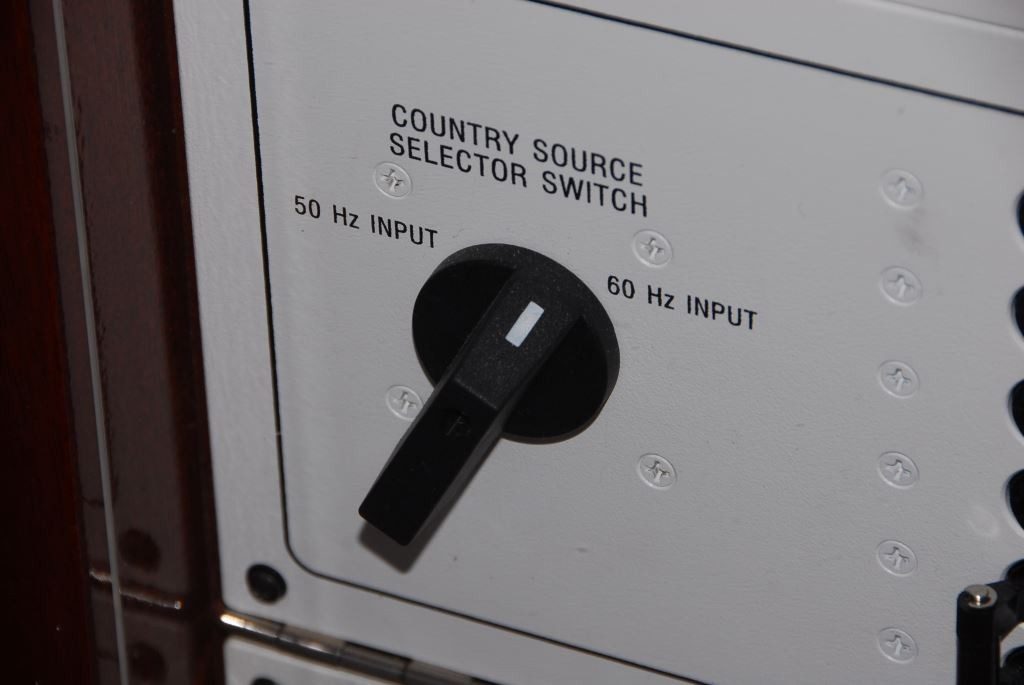
For non-frequency sensitive gear, a transformer with selectable input is one relatively simple solution.
Frequency-sensitive gear, including some motors and refrigeration and air conditioning compressors, as well as clocks and electronic circuits in microwave and ovens, washers, dryers, dish washers, refrigerators and other domestic appliances, could face problems when operated on a frequency other than that for which they were designed, some of which could be more than a simple nuisance, they can lead to equipment damage and overheating. Furthermore, servicing and getting parts for 50Hz appliances in North America, and vice versa, could also pose challenges.
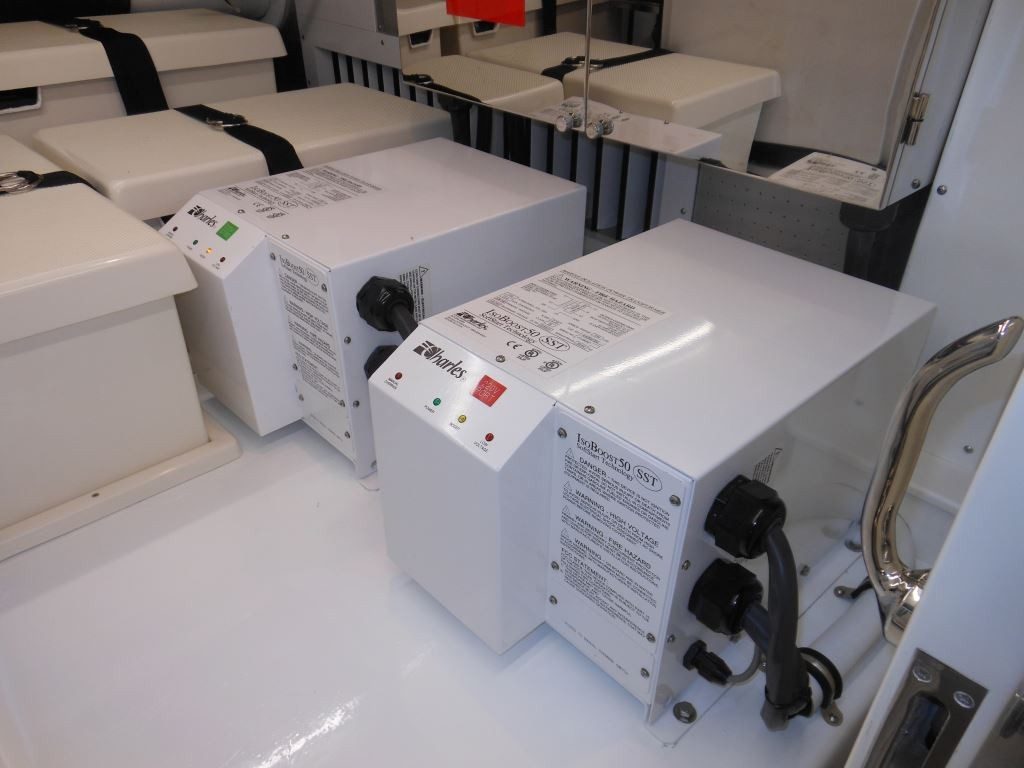
Shore power transformers can convert voltage but not frequency. For non-voltage sensitive gear like many battery chargers, water heaters and some air conditioning systems, this presents a simple and reliable approach.
The most significant challenge often revolves around air conditioning. If the compressors, air handlers and pumps are variable frequency, and many now are, they can operate on 50 Hz or 60 Hz, however, some HVAC manufacturers call for a slightly different voltage when operating on a frequency for which the unit is not primarily designed, i.e. a unit designed to operate at 120 volts and 60 Hz, when operated at 50 Hz may require 100 volts. Such guidelines are almost always posted directly on the air handler or compressor frame (and this would be achievable with a local transformer). For availability and price options, some boat builders have been known to supply North American, 60 Hz appliances in 50 Hz vessels with the aid of a small, locally installed device known as an auto-transformer, which simply steps the voltage down from 230 to 100. While these usually work well, they usually aren’t approved by the appliance manufacturer.
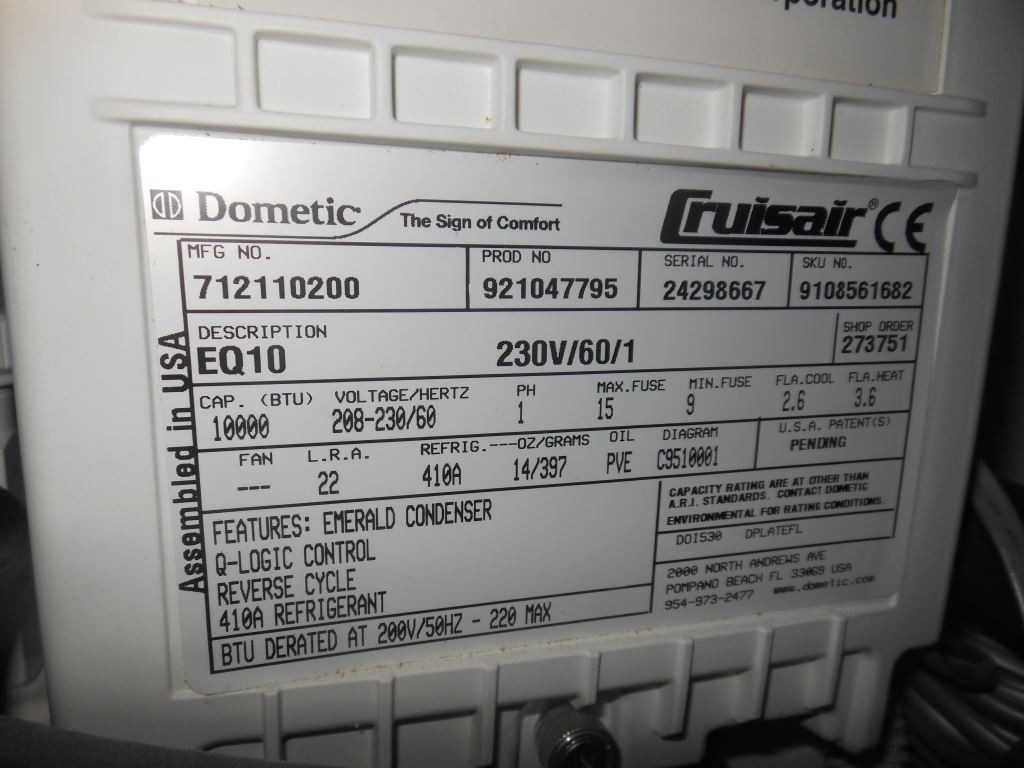
Note the information at the bottom of this air conditioning system tag, “BTU derated at 200 volts/50Hz – 220 Max [at 50 Hz]” Many modern air conditioning systems are designed to operate on 50 Hz or 60 Hz, with some caveats.
The washer and dryer present the next greatest challenges, the latter especially because of its heavy load. If they are not 50/60 Hz capable, and most aren’t, then that hurdle has to be overcome as well.
Refrigeration falls into a similar category, a relatively heavy and potentially frequency sensitive load. While they may exist, I’ve seen no household refrigerators or freezers that are specifically designed and warranted to operate on 50 and 60 Hz. Some cruisers I know have operated this gear in both 50 and 60 Hz environments without the benefit of an auto-transformer, reporting no ill effects, while others have suffered the consequences, particularly on washers and dryers. There’s no doubt it’s risky.
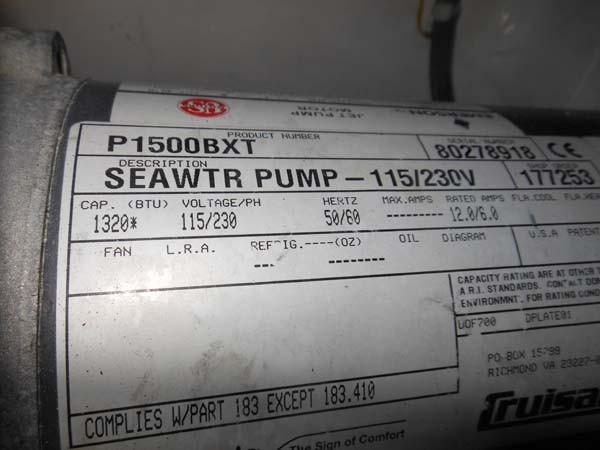
This air conditioning circulation pump can be used with 50 Hz or 60 Hz power supplies, although it will turn slower when used with the former.
If the vessel is equipped with an isolation transformer, and it almost certainly should be for this type of application, then you must ensure it is rated to operate on 50 or 60 Hz, again not all are. It’s worth noting, compressors and motors turn more quickly on 60 Hz than 50 Hz, which means you may notice a difference in capacity or efficiency when moving from 60 Hz to 50 Hz environments.
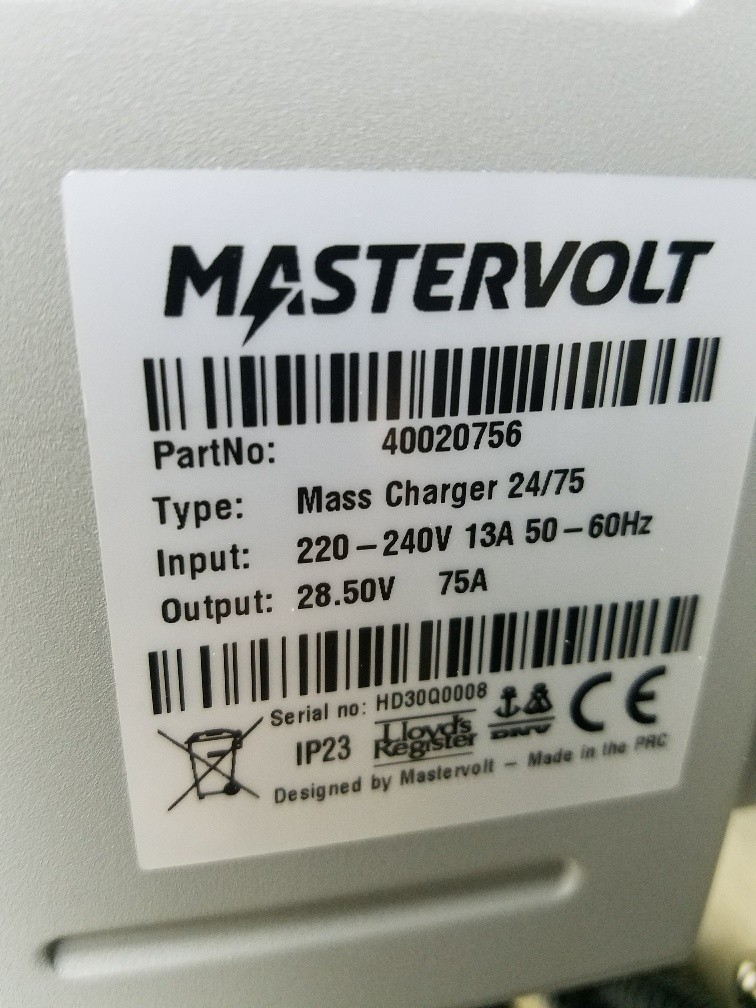
Many modern battery chargers are designed to operate equally well on 50 Hz or 60 Hz, and in some cases with a wide range of input voltage.
Ultimately, operating outside a vessel’s native frequency environment is doable, however, doing so as a visitor is far different than full time use of such a vessel, i.e. purchasing a 50 Hz vessel to cruise primarily in North America. For globe-girdling cruisers, however, the scenario is different. I have clients cruising 60 Hz vessels in Europe, and 50 Hz vessels in North America, with no frequency converter (more on this in a moment), using an isolation transformer, and 10-18 kW of inverter capacity, which means the vessel’s AC gear, receptacles and appliances all operate from the inverter (HVAC, if 50/60 Hz capable can be connected directly to shore power), which are powered by the house battery bank, which in turn are charged by battery chargers that are capable of operating from either 50 or 60 Hz, which are now readily available.
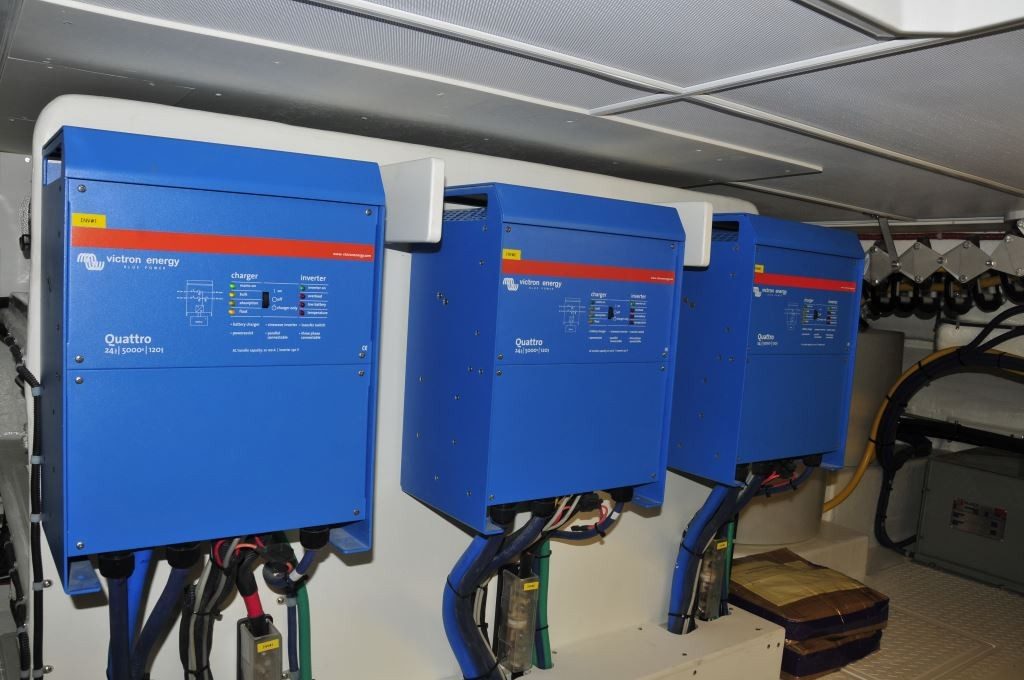
This large inverter bank supplies power to this vessel’s AC gear. It derives its power from the battery bank, which is in turn being charged with non-frequency sensitive battery chargers.
In this scenario it’s important to remember that the system can only provide as much power as is available from the shore power, taking into account the conversion losses. For instance, a 230 volt, 16 amp 50 Hz European receptacle delivers 3.6 kW, no more. If, with the exception of brief spikes, the vessel is using more than this amount of power, the batteries are being depleted. With judicious load management, drawing from the batteries during high usage periods, when cooking or doing a wash for instance, and recharging the batteries during low usage periods, overnight when the vessel and crew are asleep, this approach can be made to work. I’ve spent extended periods aboard both 50 Hz and 60 Hz vessels that utilize this arrangement; if properly designed and balanced it works well.
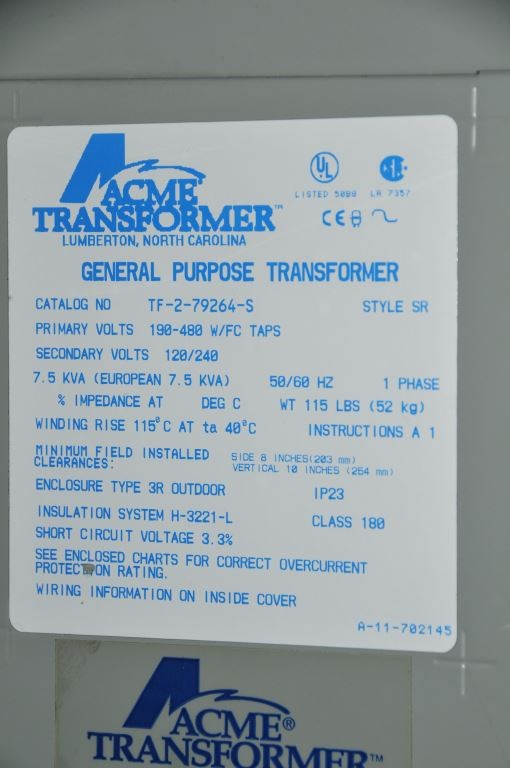
The tag on this shore power transformer indicates it’s capable of operating on 50 Hz or 60 Hz.
For vessels operating permanently in non-native electrical environments, installing a “shadow”, native supply (for a 60 Hz vessel this would be a 230-240 VAC 50 Hz system) operated from a dedicated inverter, with dedicated receptacles (in the galley for instance, along with receptacles in heads and perhaps engine room), makes it possible for the vessel operator to purchase locally, small appliances and tools.
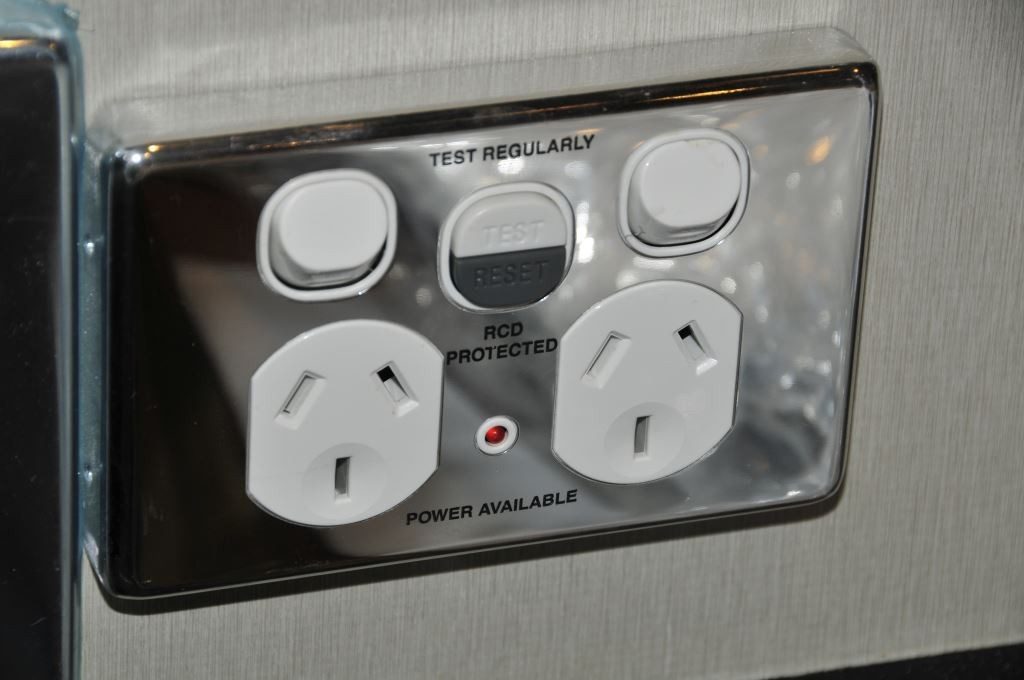
While wall receptacles may vary from country to country, with a few exceptions the world falls into two shore power categories, 230-240 VAC/50 Hz and 120/240 VAC/60 Hz.
Plug and Play
The simplest and most seamless approach for dealing with operating in a non-native frequency environment involves using a frequency converter. Frequency converters essentially do it all, they convert frequency and voltage, as well as providing isolation from galvanic corrosion current (isolation transformers do this as well), phase conversion, i.e. conversion from single to three phase power, many larger, over 70 feet for instance, use the latter, along with power boosting/conditioning for low voltage scenarios. They come at a price, however, both figurative and literal. They are costly, large, complex and they generate heat, they also consume power in the conversion process. If they fail, the vessel may be unable to use any dockside power, and in some cases genset power may also be affected as some frequency converters synchronize generator transfers. It’s not unusual for larger yachts to utilize twin frequency converters for redundancy purposes.
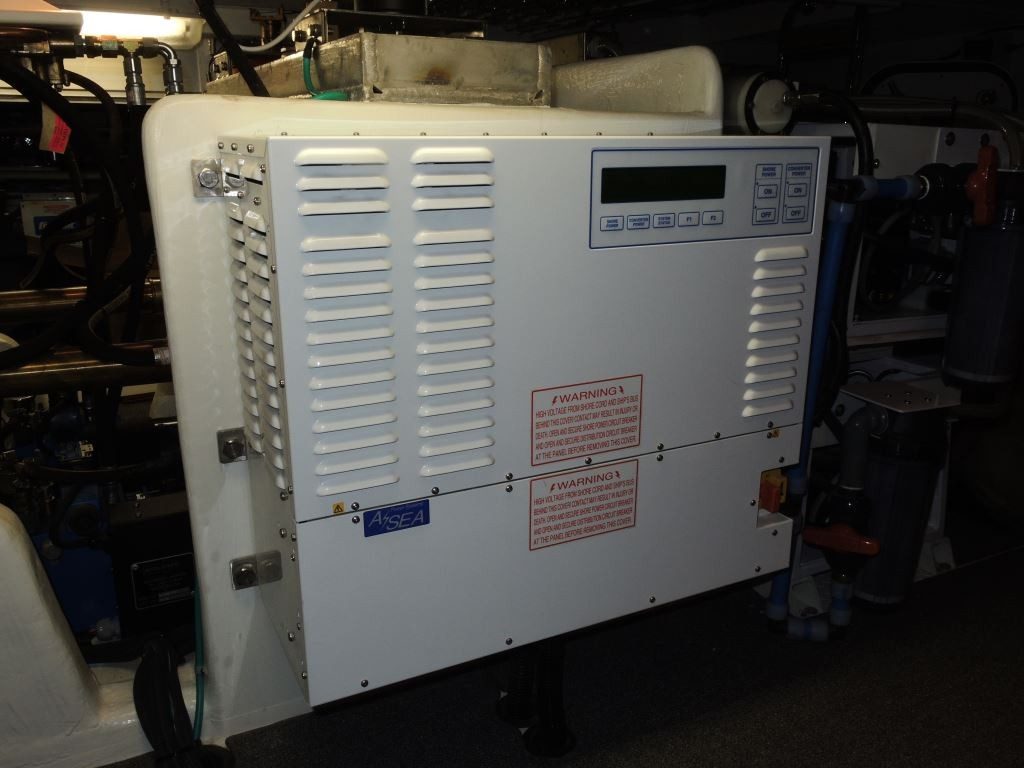
Frequency converters are a turnkey solution to operating in regions where power is not native to the vessel. They are also large, complex and costly.
Frequency converters also do not resolve the issue of using, servicing or replacing onboard equipment and appliances, and the wall receptacles may still present challenges for you and guests for items like countertop appliances, hair dryers etc. If you purchase and use a 50 Hz vessel in North America; and the washing machine or galley refrigerator fails, the local appliance technician may be unable to carry out repairs. In that case you’d be faced with replacement; however, you’d be unable to easily source a 50 Hz refrigerator, and the same is true for a 60 Hz vessel “living” in a 50 Hz land. The options are less than ideal, special order a 50 Hz unit and wait for it to be shipped to you; install an auto-transformer to trim the voltage and purchase a 60 Hz unit, assuming it’s not frequency sensitive (most washers and dryers are frequency sensitive), or install a dedicated inverter for that appliance. Having said all that, frequency converters do allow a vessel to travel almost anywhere, and plug into almost any power without much in the way of input from users.
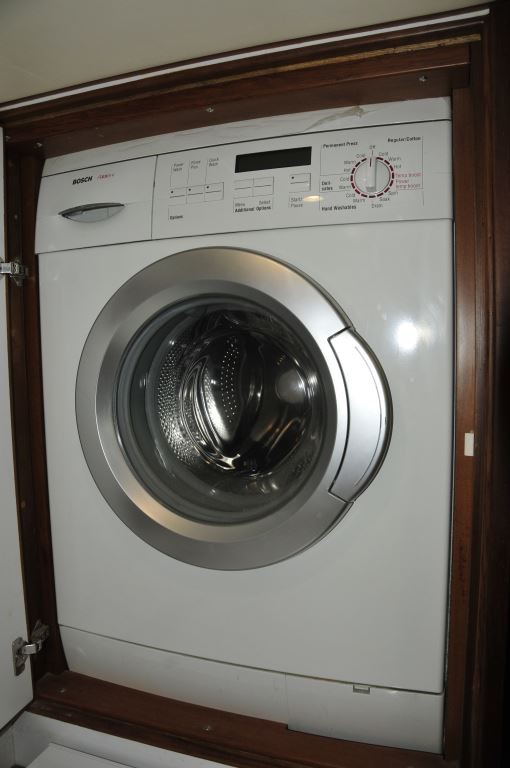
Most domestic washing machines and dryers are frequency sensitive, they must operate on the frequency for which they are designed.
Finally, resale of a vessel whose voltage is not native to the environment where it is being sold can present challenges, some of which may be legally binding. Doing so in some localities, such as Australia and New Zealand, simply isn’t allowed, the vessel’s electrical system must be safely converted in a manner that meets local guidelines, which may be quite stringent.
Whichever approach you take, make certain that those who you select to carry out modifications agree to do so in a manner that meets local recognized standards, ABYC, AUS/NZ, CE etc.
Converting an Existing Vessel for CE Compliance
There are two issues associated with an EU citizen, registering a non-EU vessel, in the EU. One is technical, and the other administrative.
Technically, converting a cruising vessel to comply with EU standards, for registration there, is no small task. There are a variety of requirements, including among others fuel, propulsion and electrical systems.
From a UK industry colleague, who is involved with CE certifications…
“If the vessel meets the structural requirements, which is a separate set of requirements and technical file, it must meet and be tested for stability requirements for design category, [i.e. Class A, B, C or D] and then meet the Essential Requirements list [entitled “Declaration of Conformity of Recreational Craft with the Design, Construction, and Noise Emission requirements”]. Many of the standards are similar to those of ABYC, however, each must be checked, glass/windows/deadlights for example, and signed off as compliant, and the engines must meet the latest EU emissions and noise standards, which could be very costly.
The boat should/must have a technical file, and as part of that, the technical file is divided into the main detailed file, and a separate structural technical file, which includes all the lamination schedules, panel sizes and calculations, as well as rudder and rudder stocks.
Contents of the report include: Definitions; Structural Options; Composite Materials; Pressure Coefficients; Pressure Limits; Panel Laminate Summary; Panel Lay-Up; Commentary on Plating; Plating Analysis; Rudders; Rudder Stocks
Many of these standards can be self-certified, but come the day it is sold and the boat gets surveyed, or spot checked by an authority, they may check all against the standards.”
Among other requirements, even where technically feasible, vessels that are less than five years old are not eligible for CE conversion.
In many cases, it is economically infeasible to make the conversion, particularly where engine emissions are concerned. If the vessel’s existing engine does not meet the requirements for CE emissions standards, there are no exemptions, with the only recourse being replacement of the engine. As far as the electrical differences, it is not mandatory to convert the vessel from 60 Hz, 120/240 VAC to 50 Hz, 230 VAC, however, provisions must of course be made for the vessel to operate in this environment, either with a frequency converter or using inverters and multi-frequency battery chargers, and the electrical system must otherwise meet CE standards. More on that subject here.
Administratively, when a vessel is built for importation to the EU, a host of documents must be provided to prove the components used in the vessel’s construction are compliant. Amassing these after the vessel is built can be challenging.
There are firms that specialize in documenting EU compliance, who can, and should in my opinion, be retained for this process.

